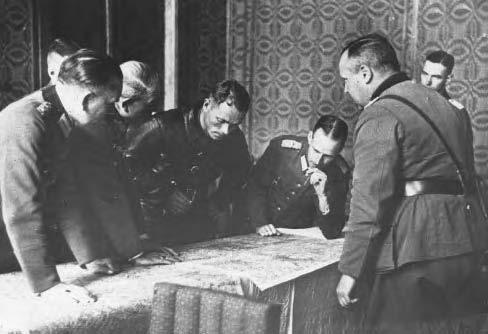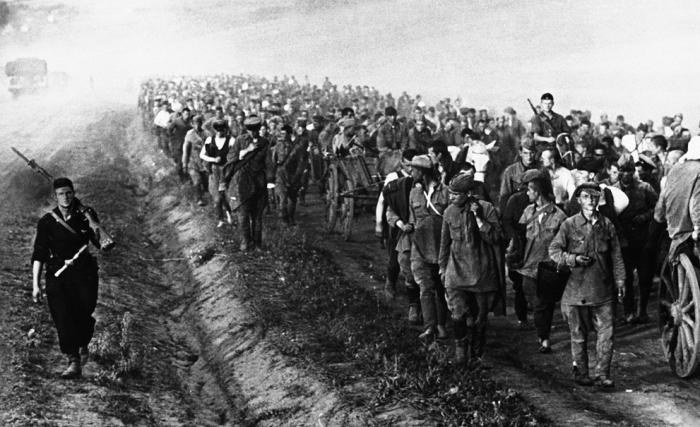In historical works on the Great Patriotic War there are many pages on which the authors of "memoirs and reflections" hung up with orders did not like to stop their attention and readers. Although there was something to think about, I didn’t want to remember it somehow. The reasons are clear - these pages are scary and shameful.
One of such unfamiliar stories is the story of the Vyazemsky "cauldron". Few people know how much worse it is than, for example, the battle on the Volga.
It is known from any history textbook, even Soviet, that near Stalingrad the Wehrmacht lost the army of General Paulus, consisting of twenty-two divisions. So, the Red Army near Vyazma suffered several large losses. The group of three armies was surrounded, the losses, according to the most conservative estimates, amounted to 380,000 people killed, 600,000 soldiers of the Red Army were captured. The number of divisions that fell into the Vyazemsky “cauldron” and ceased to exist is 37. Nine tank brigades, thirty-one artillery regiments of the reserve of the High Command were completely destroyed.
But that is not all. The Vyazemsky catastrophe had its consequences: the destruction of such a large military group opened the German troops a direct road to Moscow, which had to be urgently blocked by militiamen and cadets, poorly trained and equally poorly armed. Almost all of them died, adding five-digit numbers to the mournful piggy bank of the losses of our people in the war.

The battles near Vyazma began in October 1941. The fact that the German General Staff was planning a major offensive, the Soviet command guessed, but expected it between the 19th and 16th armies, where the forces were concentrated, which later fell into the Vyazemsky "cauldron". This was a mistake, the enemy struck south and north, from the cities of Roslavl and Dukhovschina, bypassing the defensive positions of the Soviet troops of the Western Front and surrounding them. As a result of such a classic sweeping maneuver, a high concentration of troops was created in narrow sections of the front, and the Germans managed to break through the extended defense of the Soviet troops.
Marshal G.K. Zhukov, who had commanded the Western Front since October 10, 1941, presented in his memoirs the Vyazemsky “cauldron” as a not-so-significant episode of his heroic biography, indicating that the encircled group had for a long time fettered enemy troops around itself. It really was like that. Lost supply, communications and command of the Soviet divisions fought to the last. This did not last long, and soon thousands of prisoners of dust were dusted on the roads. Their fate is not just sad, it is terrible. In the camps, most of our soldiers and officers died of starvation, cold and disease, and those who survived were branded with shame of captivity and most of them after the war again went to camps, this time Soviet.

The battle near Vyazma happened seventy-two years ago, and the remains of many thousands of soldiers who defended our Motherland still lie in unknown graves, cars drive along them, people who do not know the truth go. For a long time it was believed that it was better to forget it.
Yes, the Vyazemsky "cauldron" became a disgrace, and not the only one for the war, but not on the fallen heroes and not on the dead in captivity. They are not to blame for anything and for the most part honestly fulfilled their military duty. Those who did not want to tell the truth about the war and forbade it to others knew whose shame it was.
But we, living today, need to remember our grandfathers and great-grandfathers who did not return from the war.